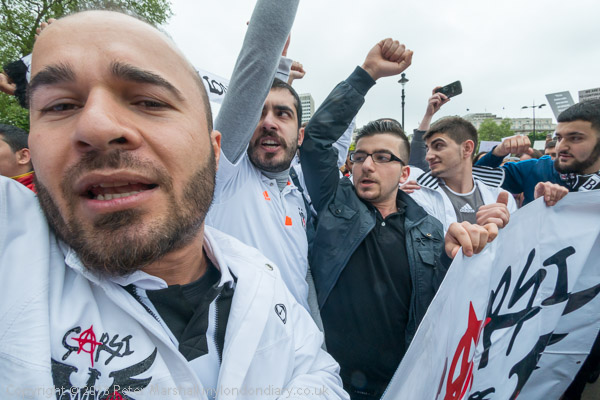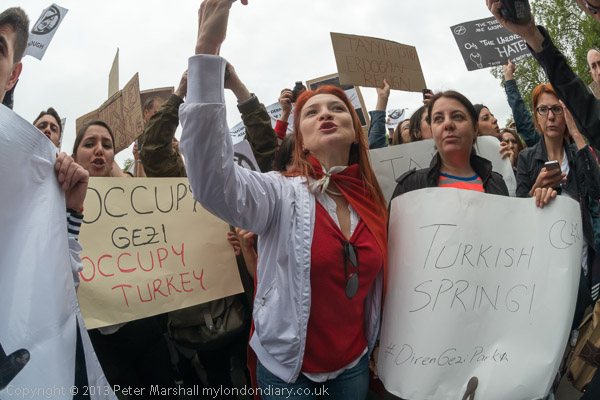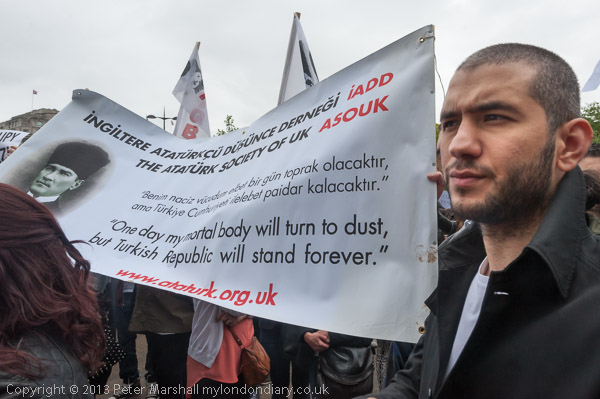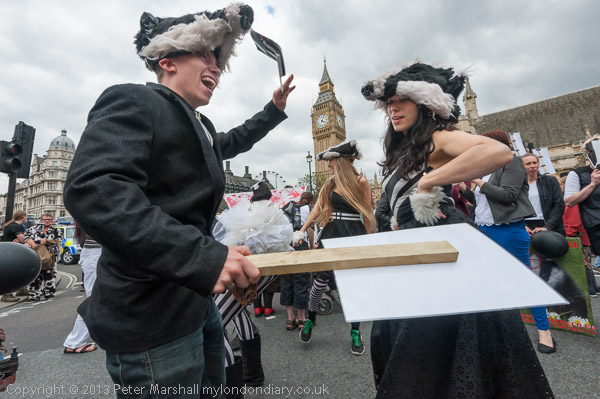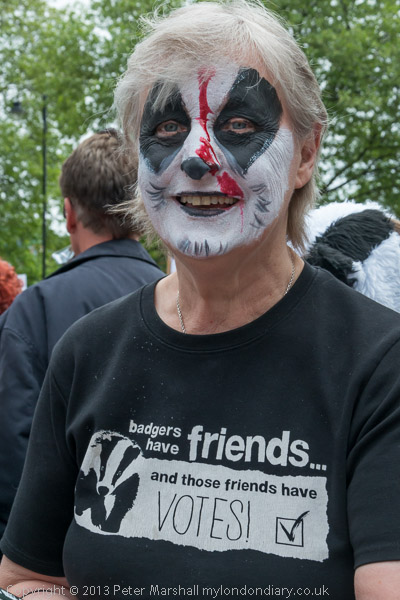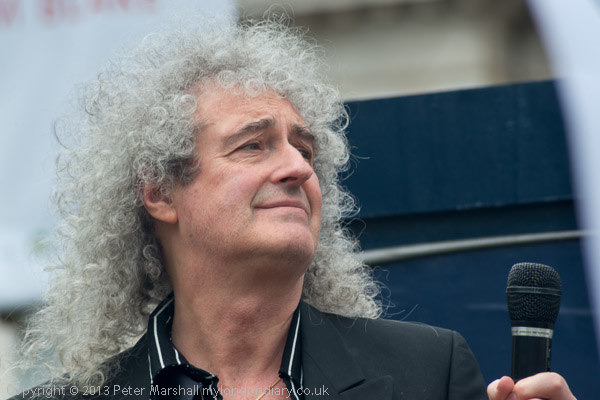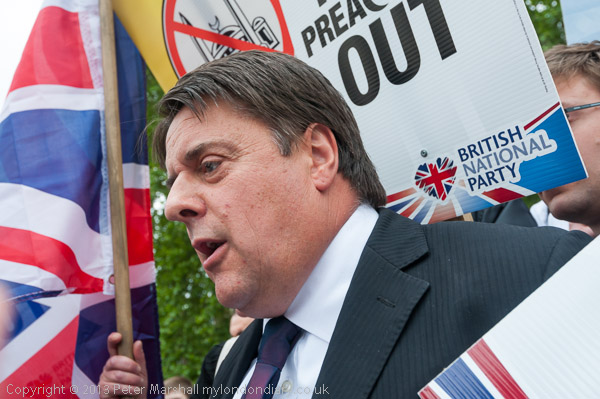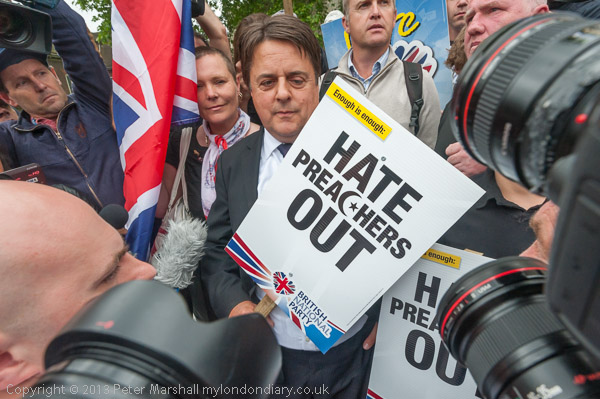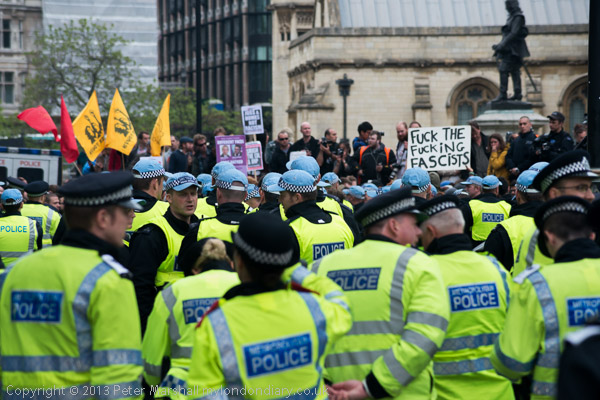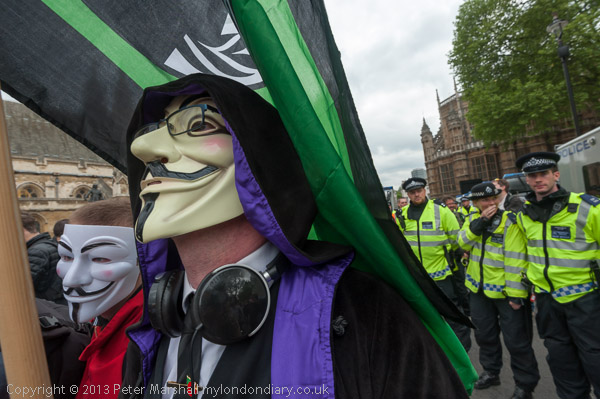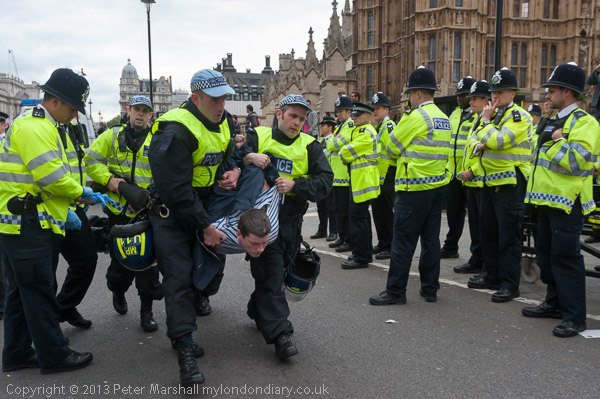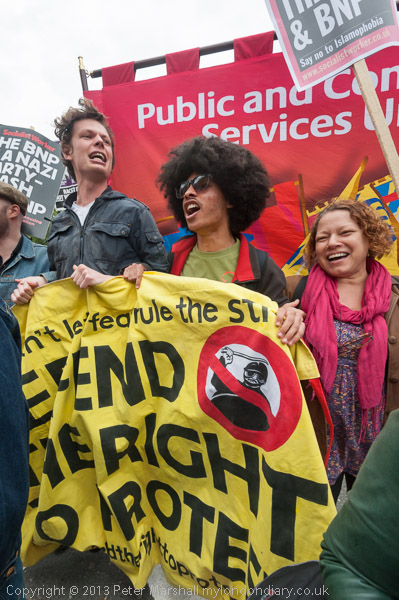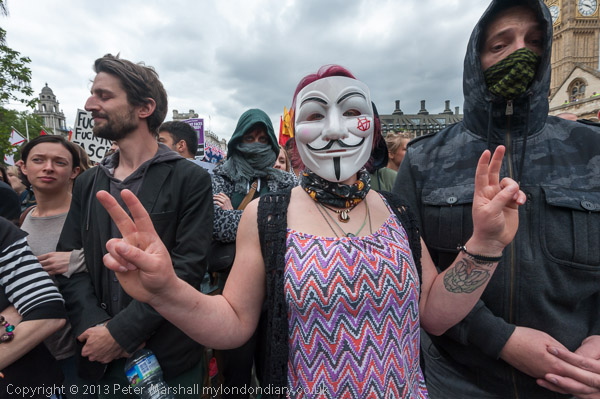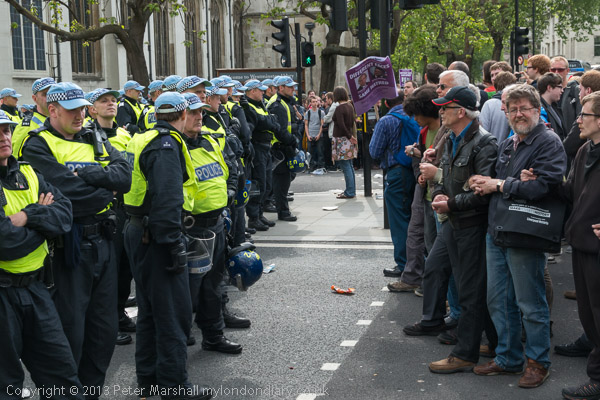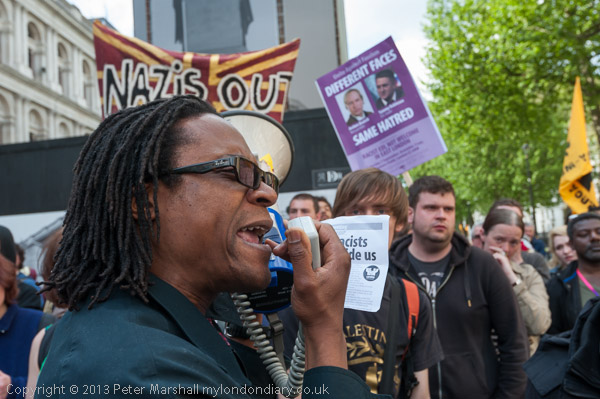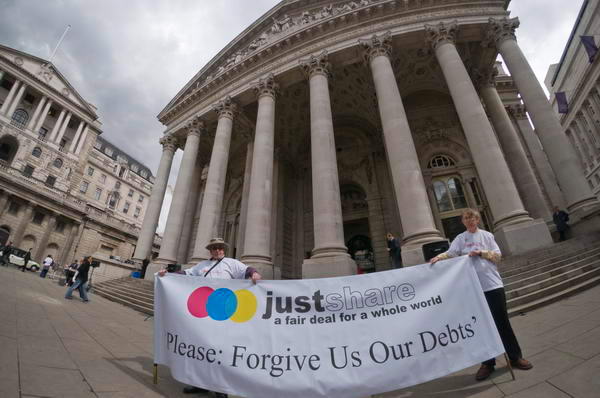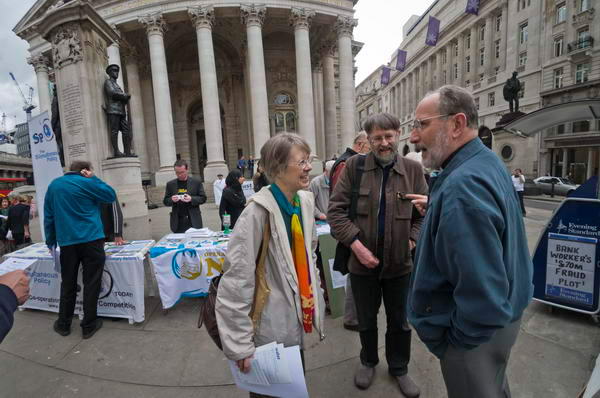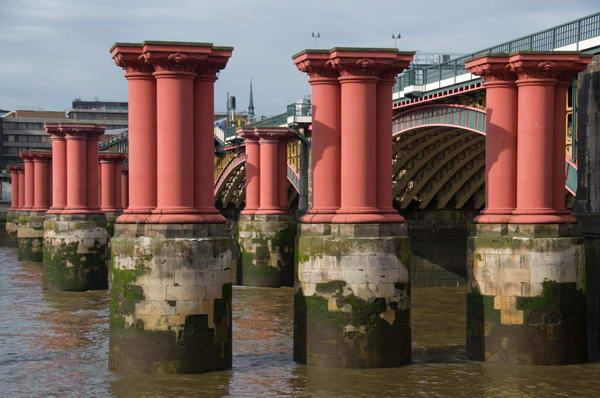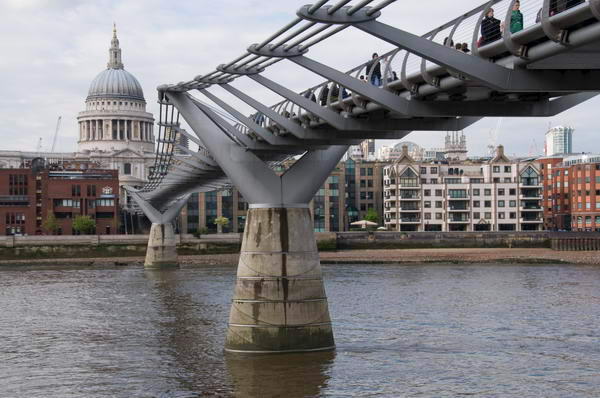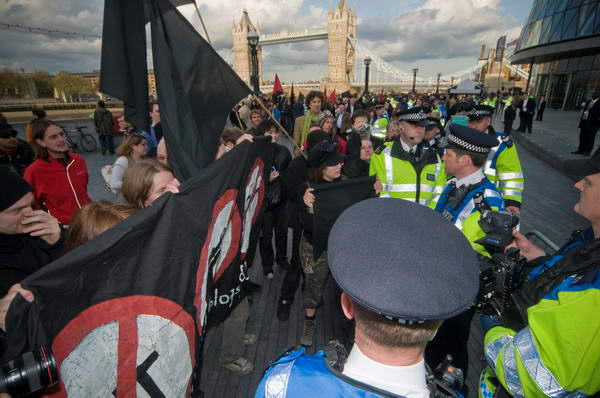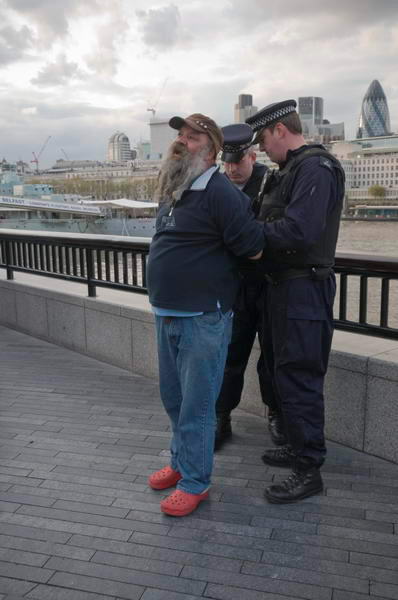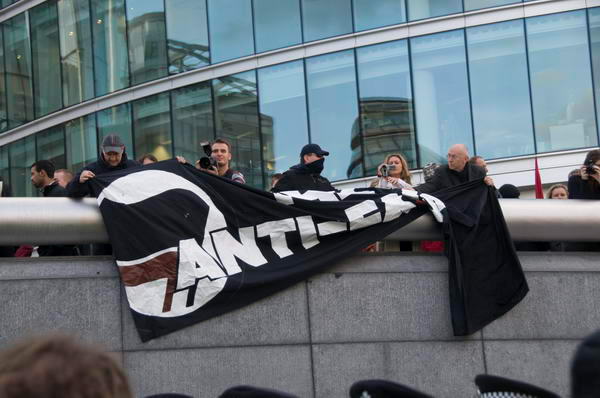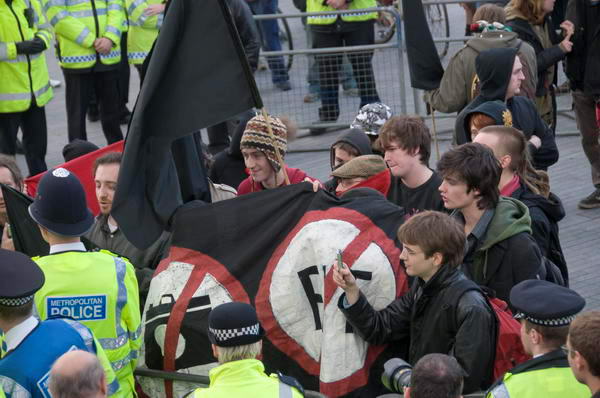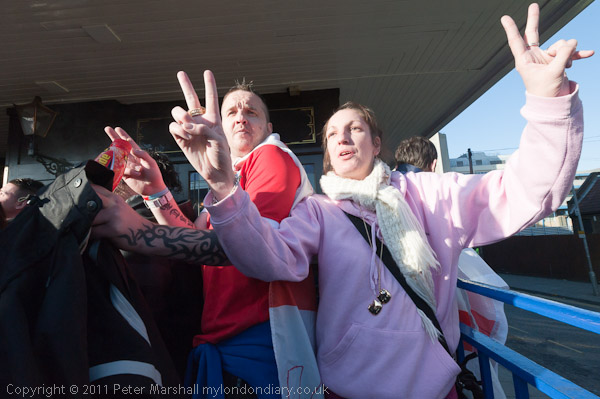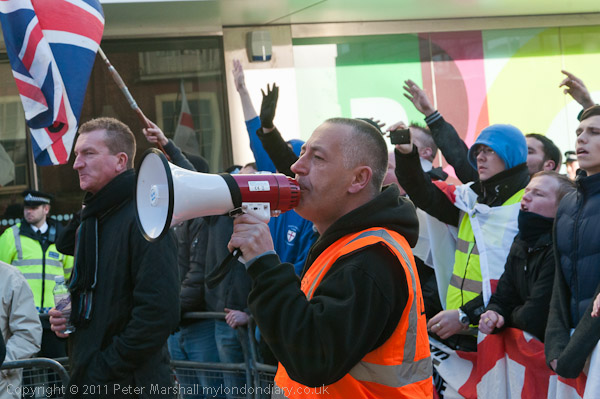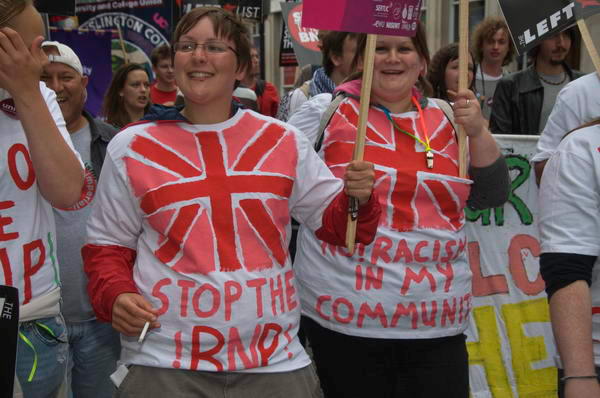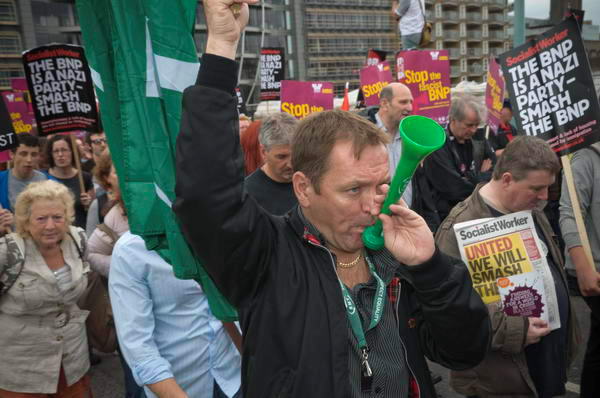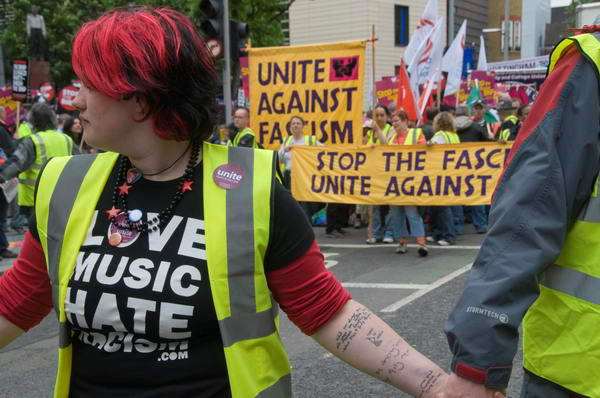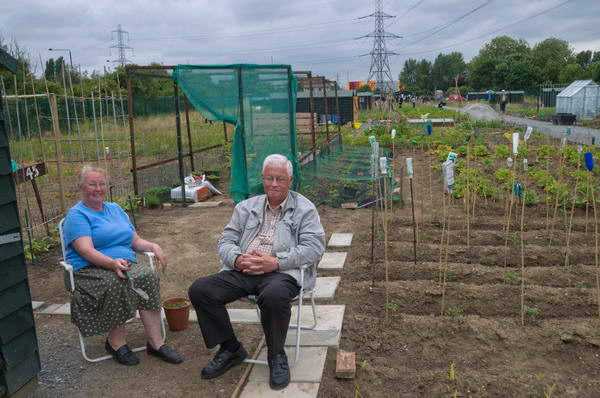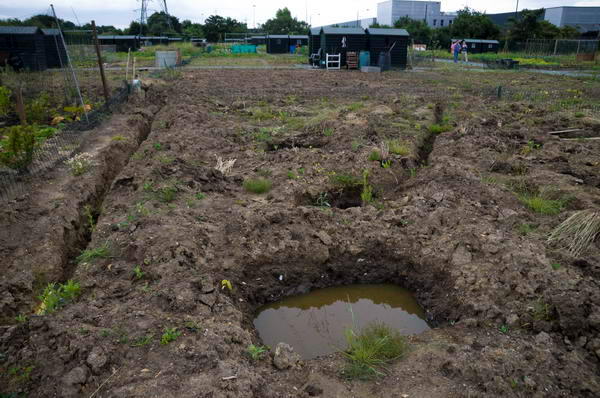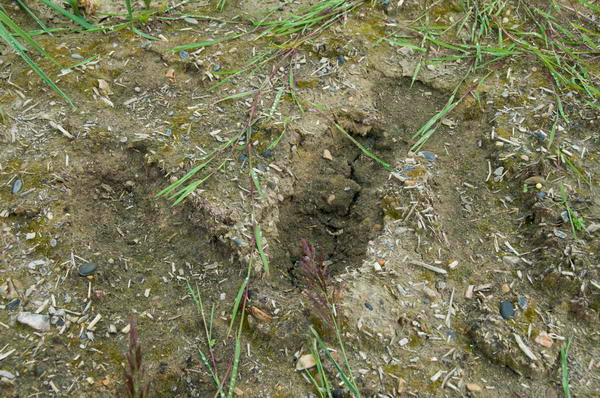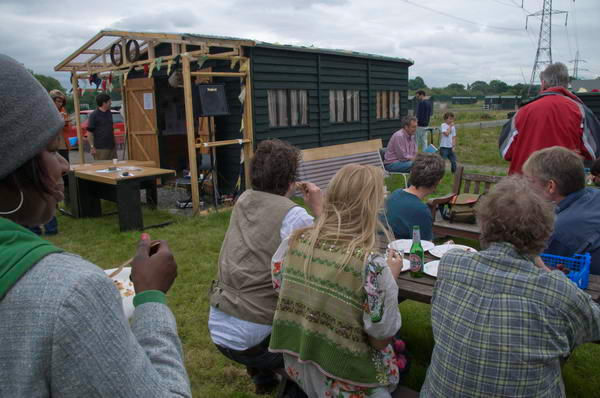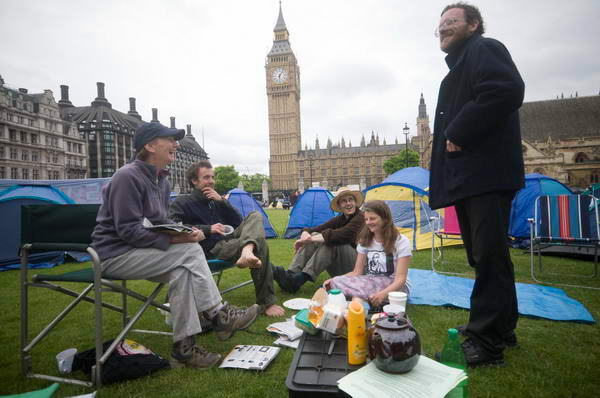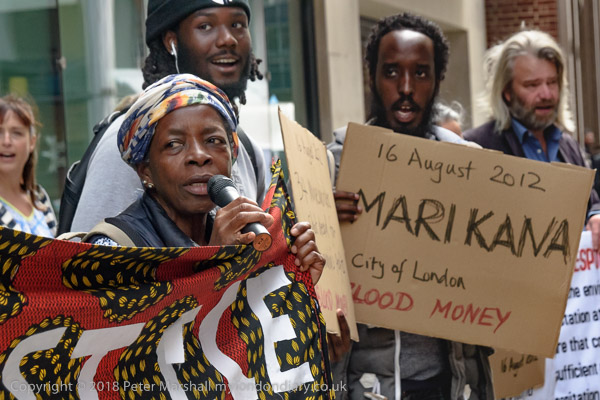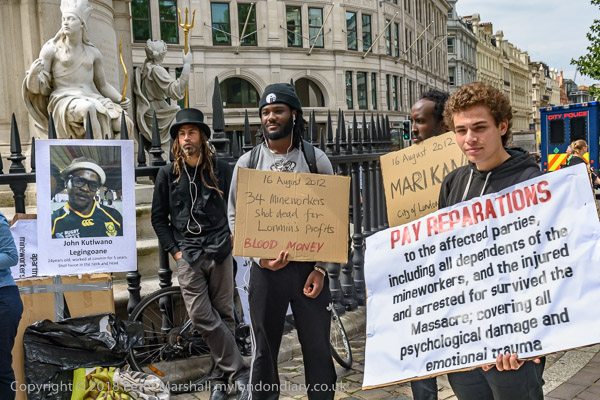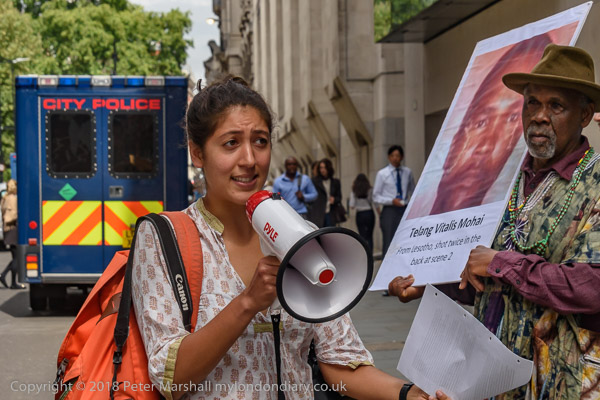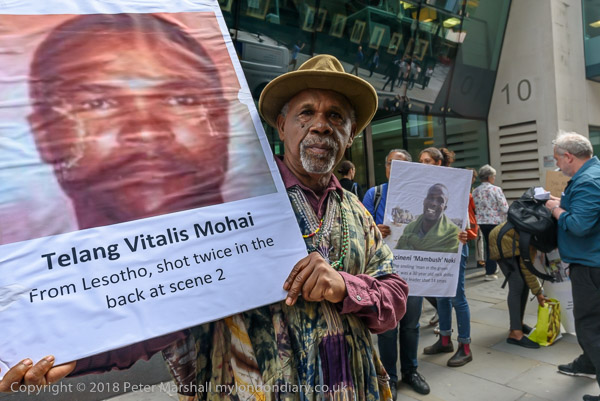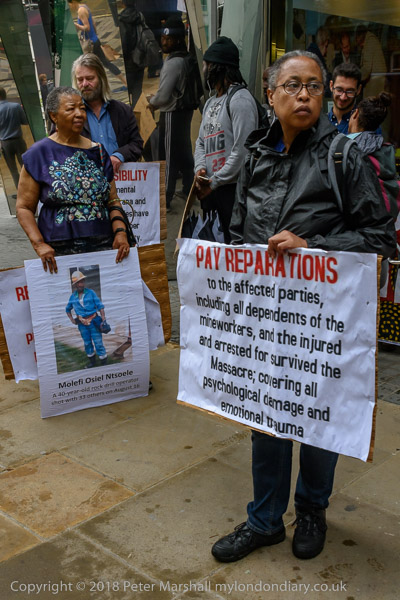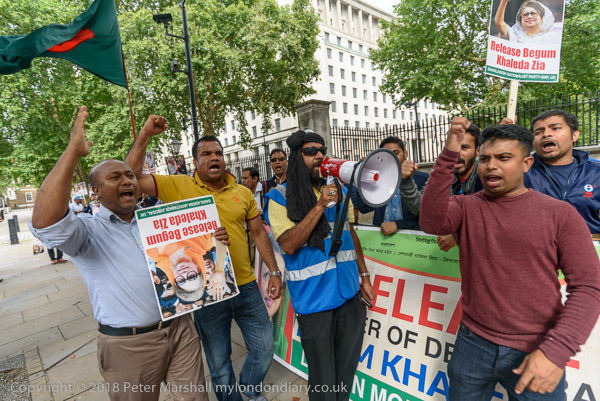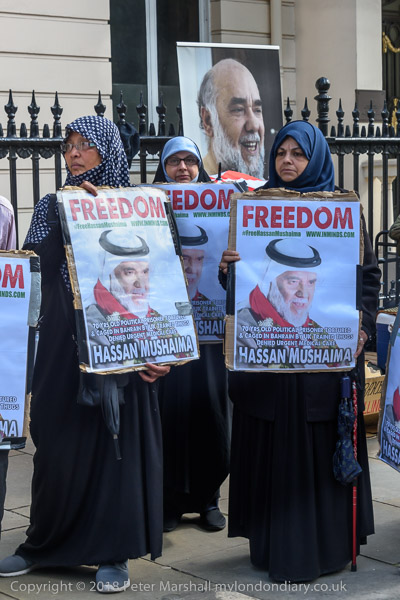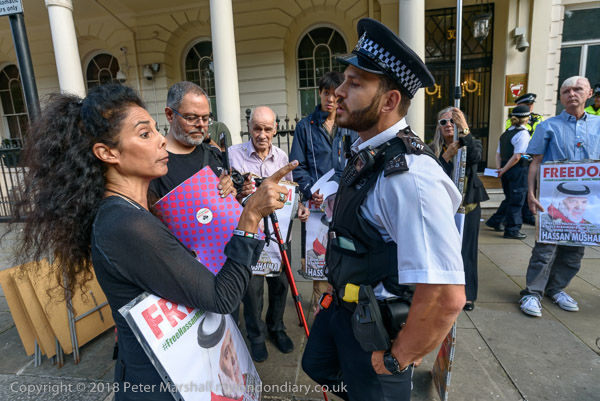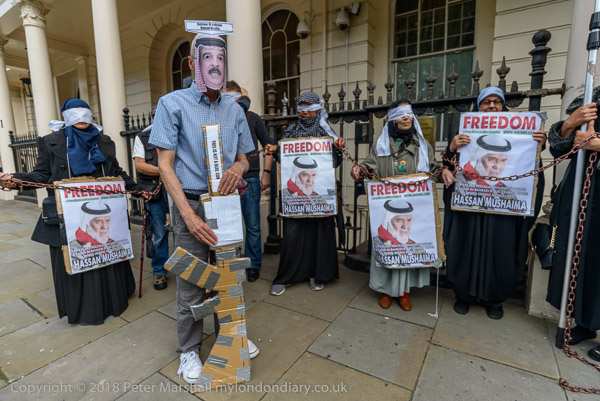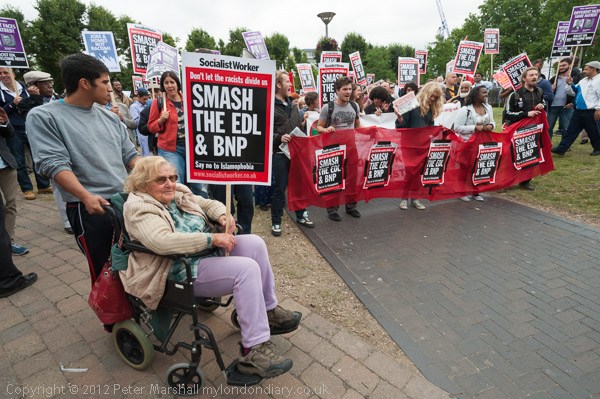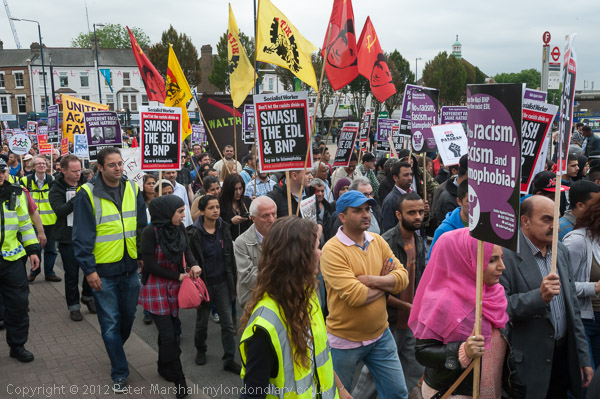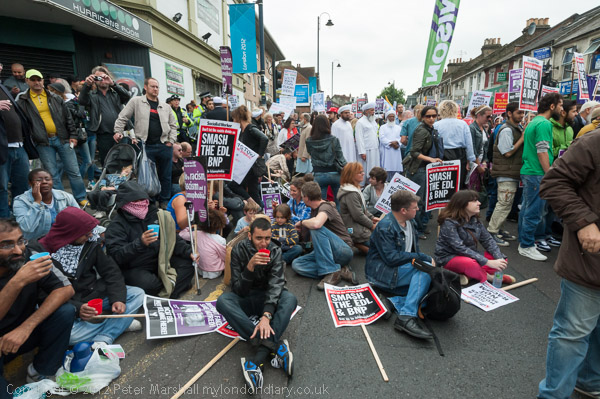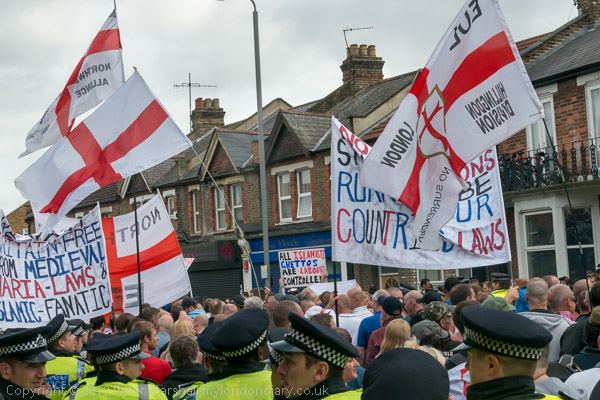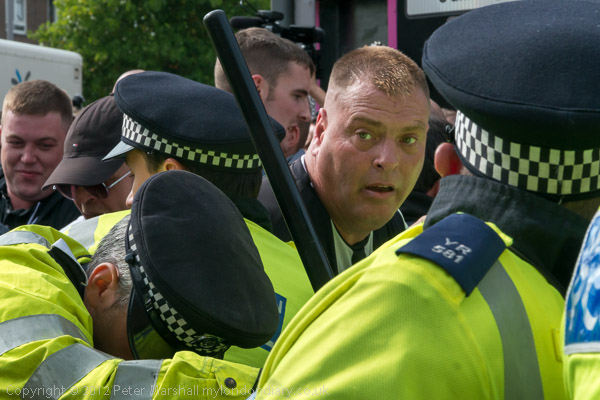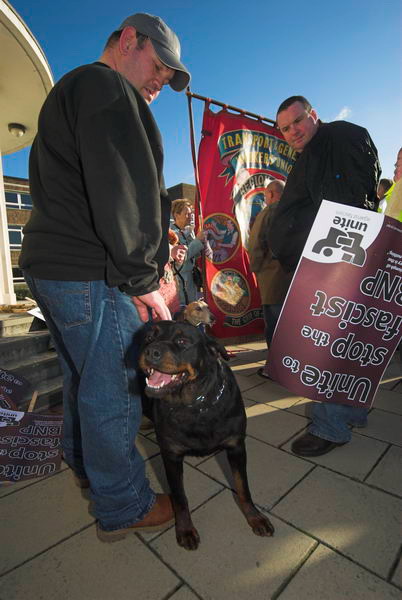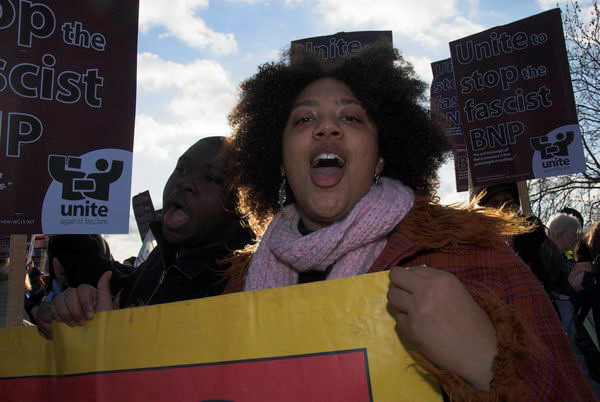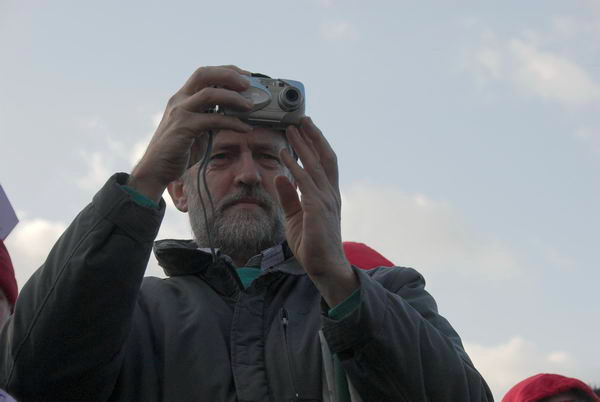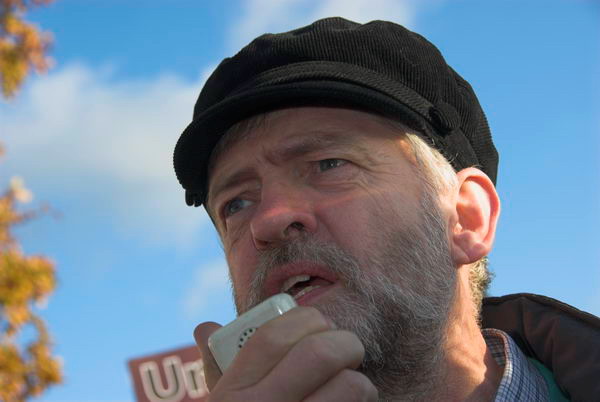The Battle of Walthamstow: On Saturday 1st of September the extreme right English Defence League attempted to march into Walthamstow and hold a rally outside the Waltham Forest Civic Centre on Forest Road. Several thousand people from all of Walthamstow’s communities came together as ‘We are Waltham Forest’ determined to oppose them.

From a long rally in Walthamstow’s main square with speeches by many community leaders and performances by local drummers and singers, the people of Walthamstow marched to Forest Road, arriving an hour or so before the EDL march was due.
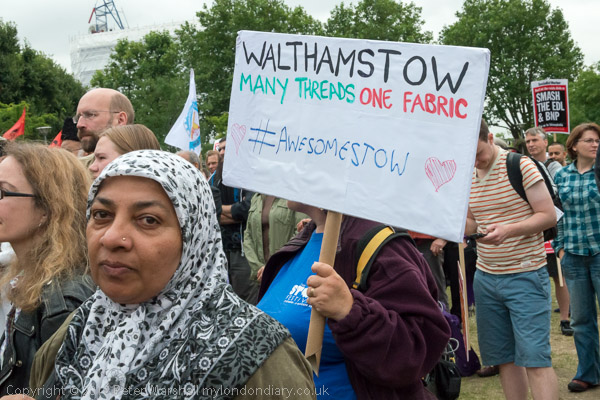
As they made their way along Hoe Street there was no doubt of their wide support from the community, with people coming out from virtually every shop and building, many waving and cheering in support.
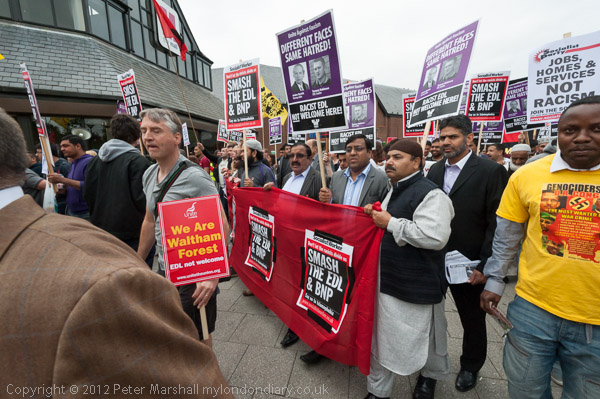
When the march reached Forest Road many of the marchers sat down on the road at the key junction on the EDL march route. I left them there and walked back towards where the EDL march was to start.
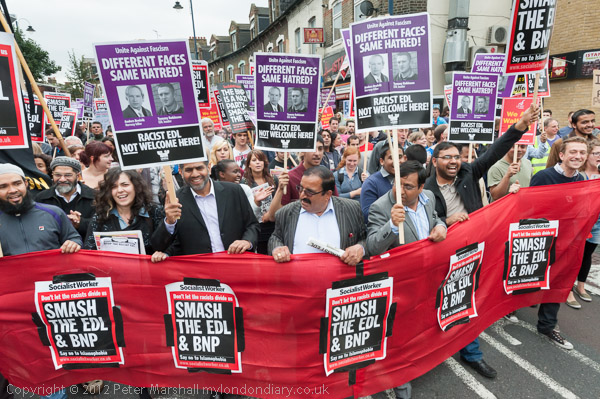
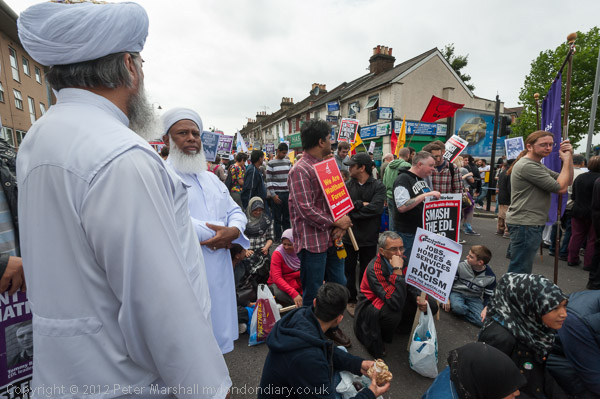
When I saw the EDL march coming towards me, it looked more like a police march as the EDL were probably surrounded by more officers than there were supporters on the march. None of the main EDL leaders was on the march as they had gone separately to where they intended to hold a rally and were setting up the PA system.
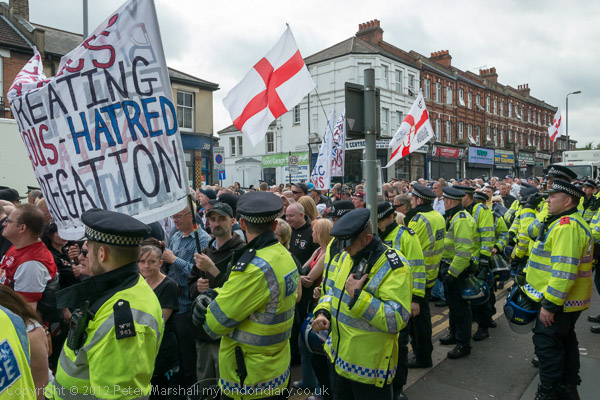
It was hard to get a clear view of the marchers through the lines of police around them, and I only had a short telephoto when a much longer lens would have been useful.
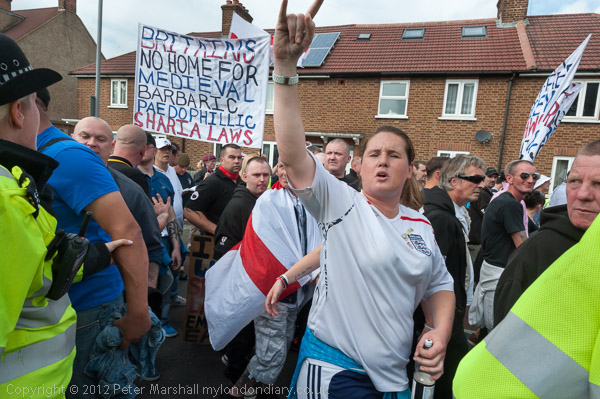
But I managed to take some pictures of the marchers and many of them saw me and shouted abuse or made offensive gestures. Others tried to hold up hands in front of their faces – in one case making a woman look as if she was giving a Nazi salute. One man even rushed through a gap between police officers and put his hand over my lens before police dragged him back into the march. Although they got in my way I was rather glad the police were there.
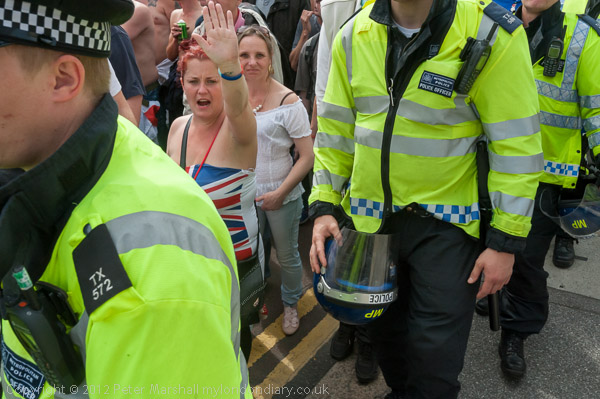
A few people had come out onto the side of the streets to watch the marchers. Most did so in silence, but some held posters against the marchers or shouted at them. I saw only one supporter, an elderly man who came out of his house to greet them and was greeted with cheers from the marchers. As I commented, “Clearly here the silent majority they claim to represent was overwhelmingly against them.”
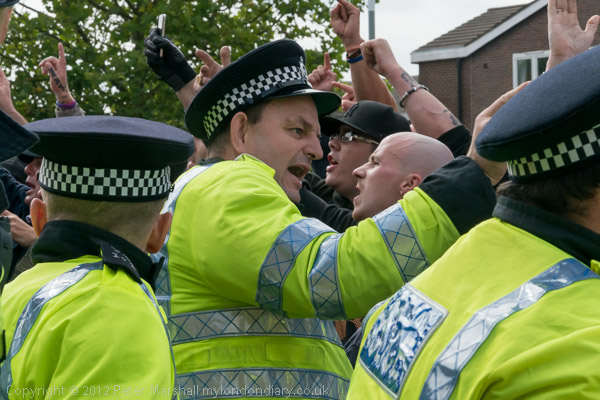
As the crucial road junction was blocked, police diverted the march down a side road shortly before it. Some of the EDL were angry at leaving the route and wanted to get at those blocking the road and there were some minor scuffles between the EDL stewards and police.

I went to the junction where the EDL march was led across the Chingford Rd and joined other photographers who were photographing the march and residents who had come to oppose them. Here EDL stewards dragged back marchers who tried to attack us and police and managed to keep their march more or less in order.
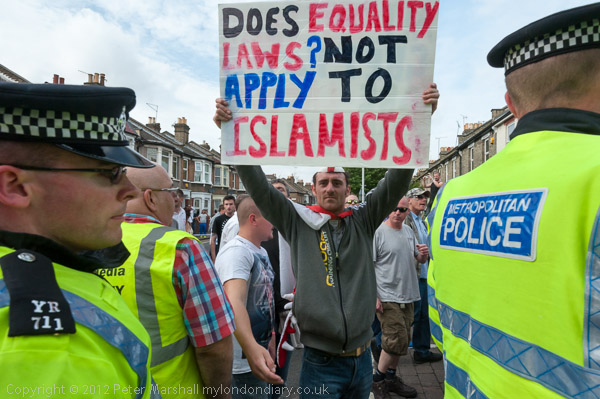
Police halted the march in Farnan Avenue at the side of the Civic Centre, but it was now clearly impossible for them to continue to the planned rally location because of the mass of protesters opposed to the EDL who were mainly held by police behind barriers on the opposite side of the road.
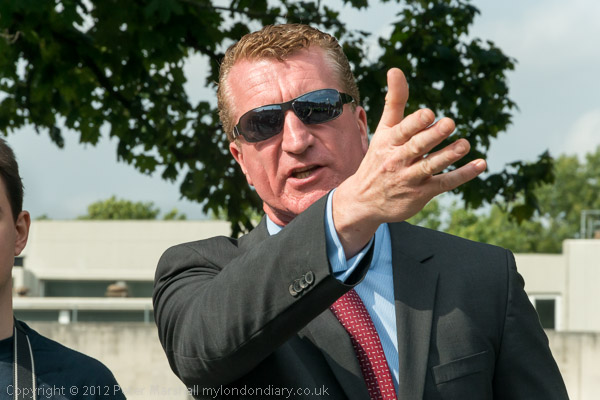
I went to where Tommy Robinson and Kevin Carroll had come with a few others to set up for the rally and took a few pictures before I was stopped by an EDL steward who insisted I was a Unite Against Fascism photographer and called over a police officer. I showed the officer my press card, but he still insisted I leave the area. I unhitched a barrier and went across to the other side of the road.
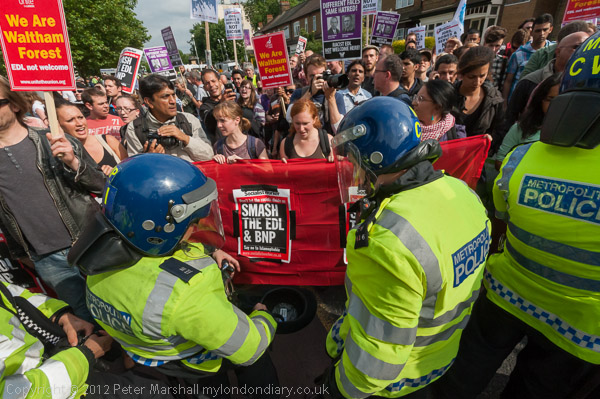
‘We Are Waltham Forest’ organisers had asked that the protest remain a peaceful one, but some had other ideas and a few sticks and other objects were begining to be thrown towards the EDL. A small brick landed a few yards from Robinson, and was picked up by him and handed to a police officer as evidence.
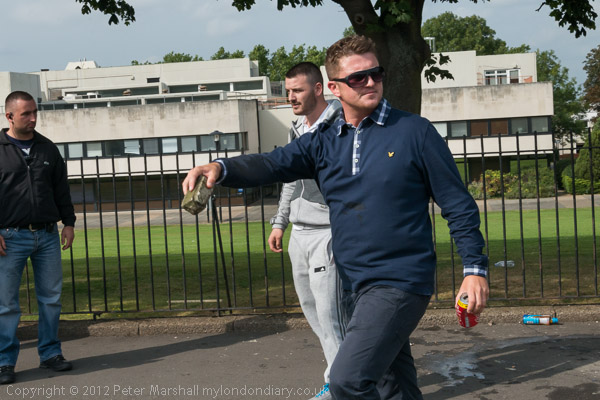
I moved to one side to avoid being hit as more objects began to be thrown – unlike many other photographers I wear no protective headgear. The situation appeared to be a stalemate, and although many of the counter-protesters had left it seemed unlikely that the EDL rally would be possible. When I left the EDL marchers were still surrounded by police in the side road.
Police later told the EDL that the rally could not go ahead, and the EDL leaders left. Police then kept the marchers surrounded for several hours for their own protection and after RMT members told police they would not allow hooligans to endanger the public by boarding trains, police decide to arrest them all and take them in vans to various police stations. They were apparently de-arrested and released in the early hours of Sunday morning.
This defeat was important in the demise of the EDL and you can see many more pictures at Waltham Forest Defeats the EDL.
Flickr – Facebook – My London Diary – Hull Photos – Lea Valley – Paris
London’s Industrial Heritage – London Photos
All photographs on this page are copyright © Peter Marshall.
Contact me to buy prints or licence to reproduce.
